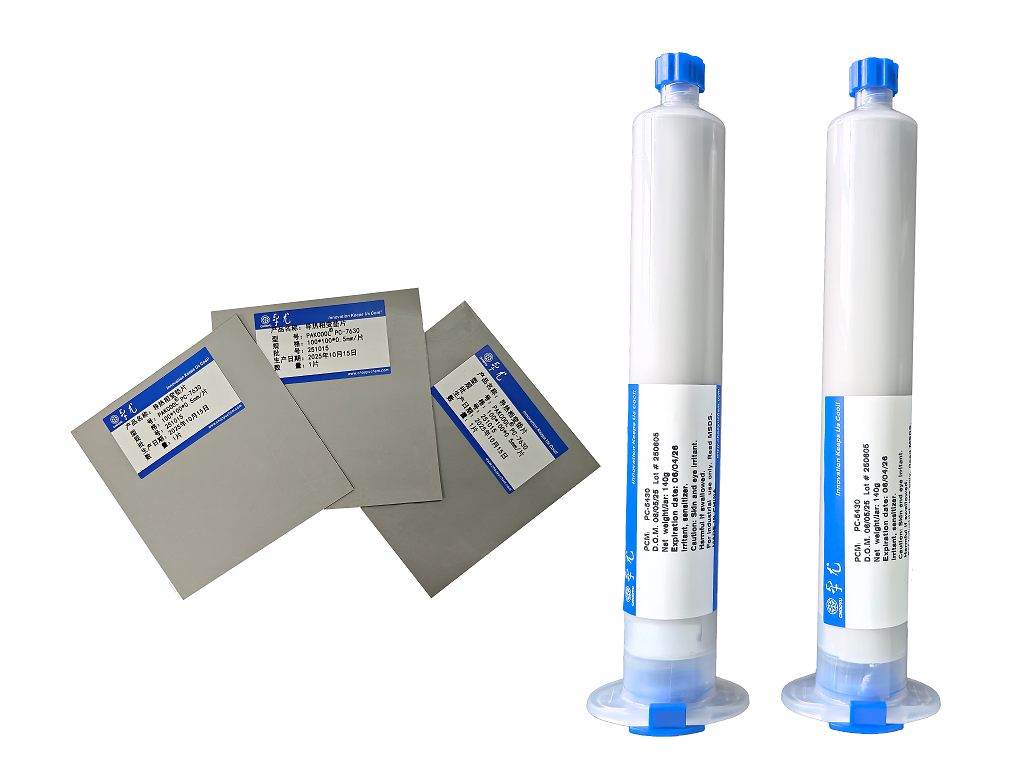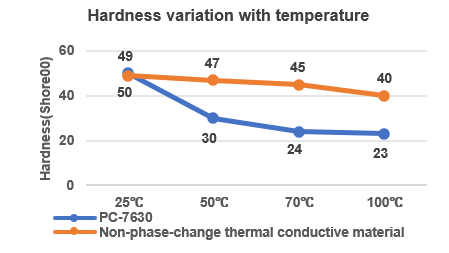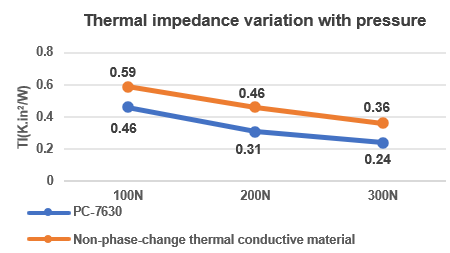|
Product Name
|
Color
|
Thermal Conductivity(W/m·K)
|
Thermal Impedance@20psi,0.5mm(K-in2/W)
|
Thickness(mm)
|
Density(g/cm³)
|
Hardness@25℃(Shore OO)
|
Phase Transition Temperature(℃)
|
Volume Resistivity(Ω·cm)
|
File
|
|
PC-7630
|
Gray
|
3.0±0.1
|
0.34
|
0.3-5.0
|
2.95±0.05
|
50±10
|
42-52
|
≥2.0×1013
|
PC-7630
|
Packaging Specifications for PAKCOOL®Thermally Conductive Phase Change Paste
PAKCOOL®PC-54xx series is offered in a 1Kg, 5Kg and 20Kg barrel or 330mL, 55mL tube or customizable according to customer requirements.
Operating Guide for PAKCOOL® Thermally Conductive Phase Change Paste
1. Preparation and Storage Before Use: Thermally conductive grease can be stored at 2-8℃ for approximately 12 months. Before use, acclimate the product at 25°C for at least 4 hours to ensure the material reaches the ambient usage temperature.
2. Application Method and Process: The interface surfaces should be cleaned with alcohol to remove dust before thermal grease is applied on the surface.
During application, use a screen-printing process.After the material is applied between the component and the heat sink, it should be placed under appropriate drying conditions to cure into a solid phase-change layer, ensuring optimal thermal performance. For best results, the thinner the paste layer, the lower the interfacial thermal resistance, provided the interface gap is fully filled.
3. Unused Products: Any unused material should be tightly sealed for future use.
Typical Drying Conditions:For example, with a coating thickness of 0.025 mm (see table below) The below drying profile is a guideline recommendation. Conditions (time and temperature) may vary based on customer’s experience and their application requirements, as well as customer’s drying equipment, oven loading and actual oven temperatures.
|
Temperature
|
Time
|
|
25°C
|
48 h
|
|
70°C
|
60 min
|
|
150℃
|
10 min
|
-
1. 1. This product is volatile; proper protection and well-ventilated usage environments are required.
-
2. 2. Viscosity varies with the temperature, it's recommended to use in constant temperature conditions.
-
3. 3. Please refer to the product's Material Safety Data Sheet (MSDS) for safety details.
Process Characteristics of PAKCOOL® Thermal Conductive Phase Change Paste
Screen Printing Process

|
The material used for screen meshes is typically nylon. The thickness of the coating applied during the screen printing process is related to the mesh count of the screen. A lower mesh count means a larger diameter of the mesh openings, which results in a thicker coating under the same printing conditions. The table below illustrates how different mesh counts correspond to different coating thicknesses:
|
Mesh Count
|
Mesh Thickness(mm)
|
Coating Thickness(mm)
|
|
60
|
0.21
|
0.135~0.145
|
|
80
|
0.20
|
0.12~0.15
|
|
110
|
0.15
|
0.09~0.10
|
|
Packaging Specifications for PAKCOOL® Thermally Conductive Phase Change Pad
PAKCOOL®PC-76xx Series Thermally Conductive Phase Change Pads are adhesive-free and can be cut to size according to customer requirements.
PAKCOOL® Thermal Conductive Phase Change Pad offers excellent stress-buffering capability



 返回列表
返回列表






